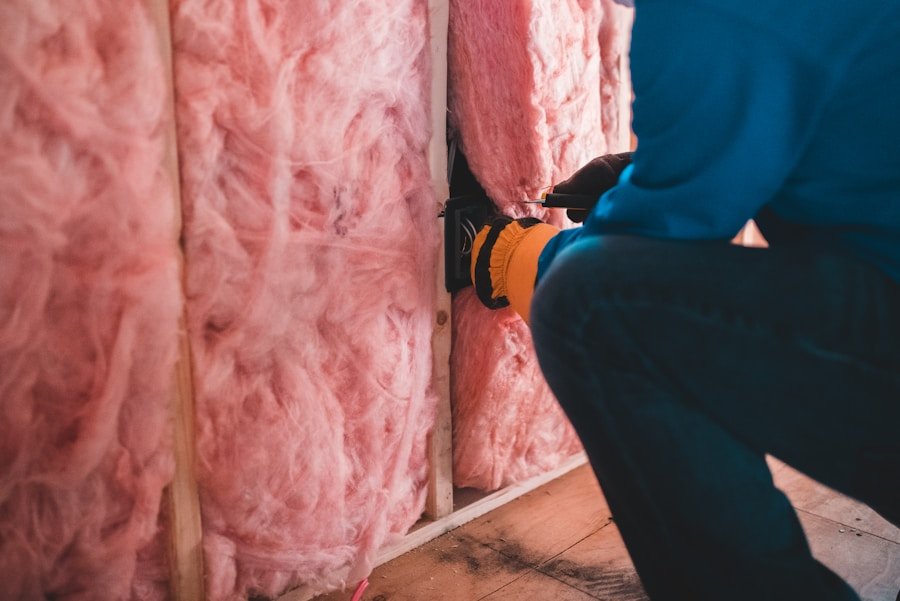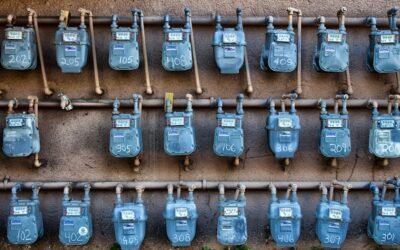Home insulation is a crucial aspect of maintaining a comfortable and energy-efficient living environment. Proper insulation helps to regulate the temperature inside your home, keeping it warm in the winter and cool in the summer. This not only enhances the comfort of your living space but also reduces the need for excessive heating and cooling, leading to lower energy bills and a reduced carbon footprint. Additionally, effective insulation can help to prevent moisture build-up and condensation, which can lead to mould and mildew growth, as well as damage to your home’s structure. Overall, investing in quality home insulation is a wise decision that can improve the overall quality of life for you and your family.
In addition to the practical benefits, home insulation also adds value to your property. Potential buyers are increasingly looking for energy-efficient homes, and proper insulation is a key factor in achieving this. By ensuring that your home is well-insulated, you can increase its market appeal and potentially command a higher selling price. Therefore, understanding the importance of home insulation is essential for homeowners who want to create a comfortable, energy-efficient, and valuable living space.
Identifying Areas in Your Home That Need Insulation
Before you can begin insulating your home, it’s important to identify the areas that are in need of insulation. Common areas that may require insulation include the attic, walls, floors, and crawl spaces. In the attic, for example, heat can easily escape through the roof if it is not properly insulated. Similarly, uninsulated walls and floors can allow heat to transfer in and out of your home, leading to increased energy consumption and reduced comfort. Crawl spaces are also prone to heat loss and moisture build-up if not adequately insulated. By conducting a thorough assessment of your home, you can pinpoint the areas that require insulation and develop a plan for addressing them.
In addition to these common areas, it’s important to consider other potential sources of heat loss, such as windows and doors. Even small gaps and cracks around these openings can allow heat to escape, so it’s important to ensure that they are properly sealed and insulated. By identifying these areas in your home that need insulation, you can take targeted action to improve the overall energy efficiency and comfort of your living space.
Choosing the Right Insulation Materials
Once you have identified the areas in your home that require insulation, the next step is to choose the right insulation materials. There are several different types of insulation available, each with its own unique properties and benefits. Common options include fibreglass, cellulose, foam, and mineral wool. Fibreglass insulation is one of the most popular choices due to its affordability and effectiveness at reducing heat transfer. Cellulose insulation, made from recycled paper products, is another eco-friendly option that provides excellent thermal performance. Foam insulation, such as spray foam or rigid foam boards, offers superior air sealing and moisture resistance. Mineral wool insulation, made from natural rock or slag, is known for its fire resistance and sound absorption properties.
When choosing insulation materials, it’s important to consider factors such as R-value, which measures the material’s thermal resistance, as well as its fire safety rating and environmental impact. Additionally, you should take into account the specific requirements of each area in your home that needs insulation. For example, attic insulation may require different materials than wall or floor insulation. By carefully selecting the right insulation materials for your home, you can ensure that you achieve optimal energy efficiency and comfort.
DIY Insulation Tips for Homeowners
For homeowners who are comfortable with DIY projects, there are several tips to keep in mind when insulating your home. Firstly, it’s important to wear protective gear such as gloves, goggles, and a mask when handling insulation materials to protect yourself from irritation and airborne particles. Additionally, be sure to carefully follow the manufacturer’s instructions for installing the insulation to ensure that it is done correctly. When insulating walls or floors, take care to fill all gaps and voids to prevent air leakage and heat transfer. In the attic, be mindful of any electrical wiring or fixtures and take precautions to avoid damage or fire hazards.
Another important consideration for DIY insulation is air sealing. In addition to adding insulation, it’s crucial to seal any gaps or cracks in your home’s envelope to prevent air leakage. This can be done using caulk or weatherstripping around windows and doors, as well as expanding foam or sealant around pipes and electrical penetrations. By combining proper insulation with effective air sealing, you can maximise the energy efficiency and comfort of your home.
Hiring a Professional Insulation Contractor
While some homeowners may feel confident in tackling insulation projects themselves, others may prefer to hire a professional insulation contractor. A qualified contractor will have the expertise and experience to assess your home’s insulation needs and recommend the most suitable materials and techniques for achieving optimal results. Additionally, professional contractors have access to specialised equipment and tools that may not be readily available to homeowners, allowing them to complete the job more efficiently and effectively.
When hiring an insulation contractor, it’s important to do your research and choose a reputable company with a proven track record of quality workmanship. Look for contractors who are licensed and insured, as well as those who offer warranties on their work. It’s also a good idea to request multiple quotes from different contractors to compare prices and services before making a decision. By hiring a professional insulation contractor, you can ensure that your home is properly insulated by experts who will deliver long-lasting results.
Maintaining and Updating Your Home Insulation
Once your home is properly insulated, it’s important to maintain and update the insulation over time to ensure that it continues to perform effectively. Regular maintenance tasks may include checking for signs of damage or wear, such as water stains or mould growth, which could indicate a problem with your insulation. Additionally, it’s important to monitor your energy bills and indoor comfort levels to identify any changes that may indicate a decline in insulation performance.
In some cases, updating your home insulation may be necessary to address issues such as settling or compression of insulation materials over time. This can be particularly common in attic insulation where gravity can cause fibreglass or cellulose materials to compact and lose their effectiveness. By periodically inspecting and updating your home insulation as needed, you can ensure that it continues to provide optimal energy efficiency and comfort for years to come.
Additional Tips for Keeping Your Home Warm in Winter
In addition to proper insulation, there are several additional tips for keeping your home warm in winter. One simple yet effective strategy is to use heavy curtains or blinds on windows to reduce heat loss and block out cold drafts. Additionally, consider using draft excluders or door snakes at the bottom of doors to prevent cold air from entering your home. Another helpful tip is to use rugs or carpets on bare floors to provide an extra layer of insulation and warmth.
Furthermore, consider using programmable thermostats to regulate the temperature in your home more efficiently. By programming your thermostat to lower the temperature when you are away or asleep, you can save on heating costs without sacrificing comfort. Additionally, consider using space heaters in specific areas of your home where extra warmth is needed rather than heating the entire house at once.
In conclusion, proper home insulation is essential for maintaining a comfortable and energy-efficient living environment. By understanding the importance of insulation, identifying areas in your home that need insulation, choosing the right materials, and either tackling DIY projects or hiring professional contractors, you can ensure that your home is well-insulated for optimal performance. Additionally, by maintaining and updating your insulation over time and implementing additional tips for keeping your home warm in winter, you can enjoy a comfortable living space while reducing energy costs and environmental impact.




0 Comments